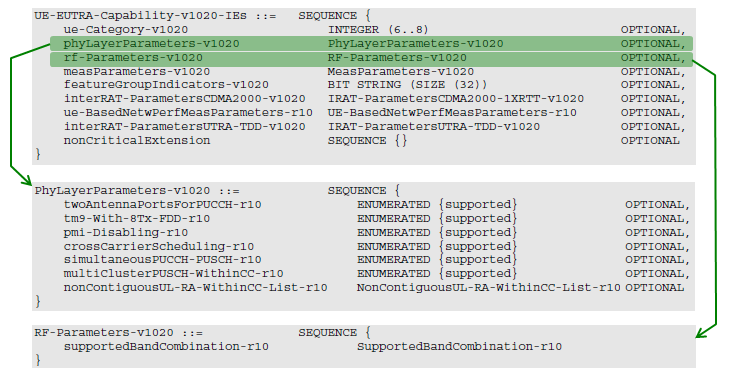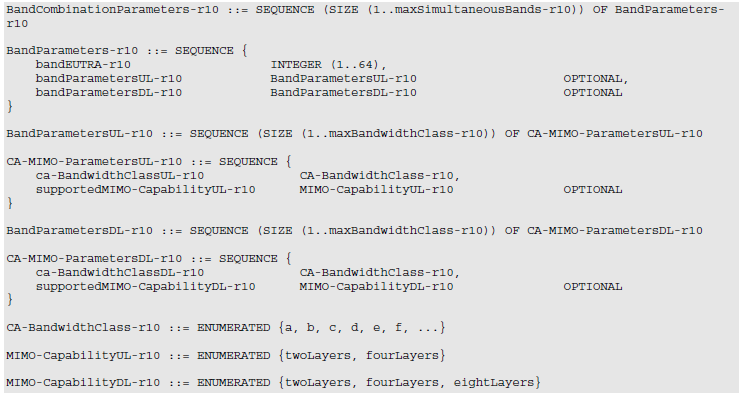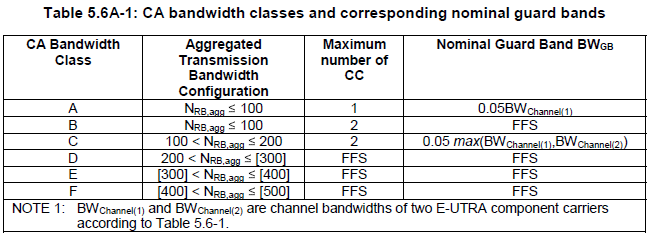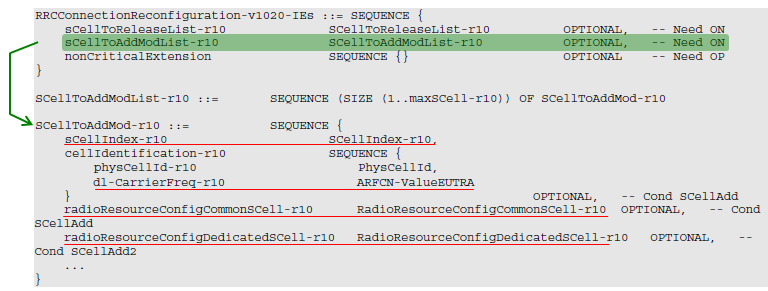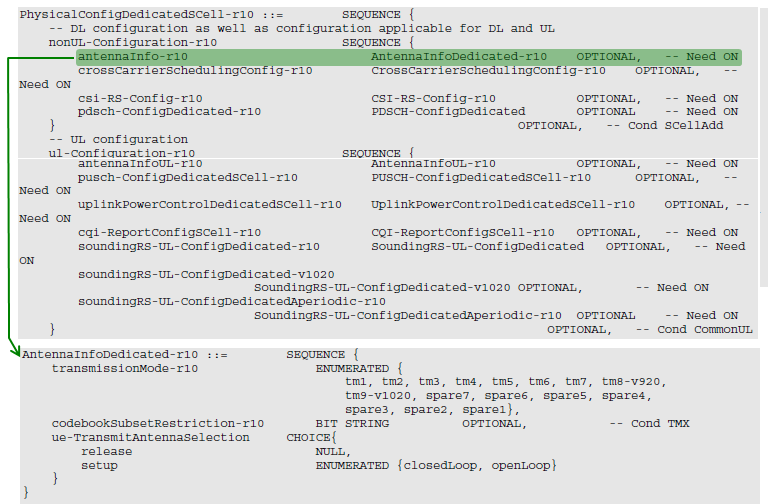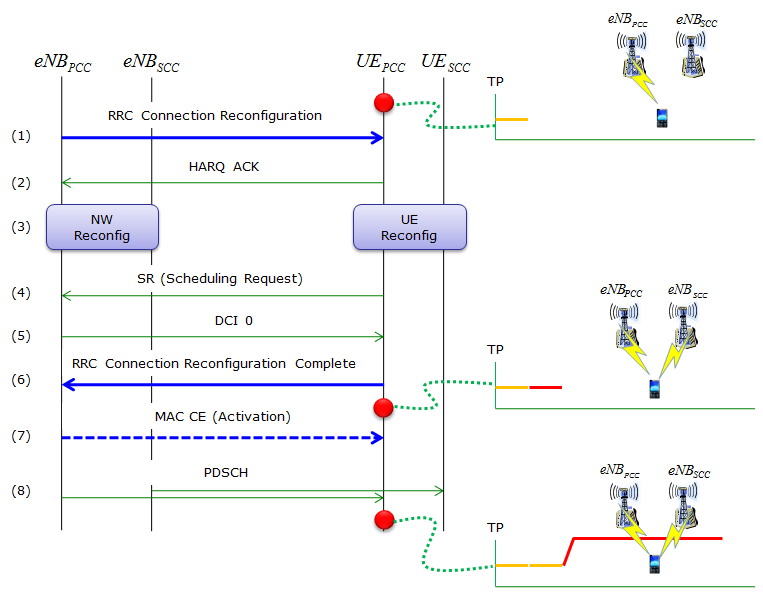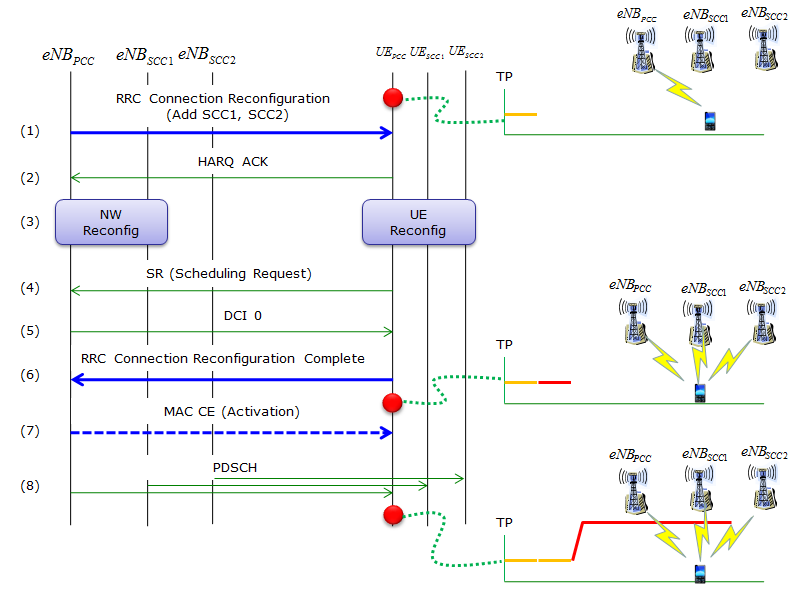|
4G/LTE - LTE Advanced |
||
|
Message Flow
There are a good news and a bad news on RRC messages for Carrier Aggregation. Which one do you want to go first ? Good News first ? Good News is that basically there would be only two messages you have to dig into. (UE Capability Information and RRC Connection Reconfiguration). Now goes the Bad News. Bad News is that the two message are so complicated (contains so much information), it is extremely difficult to understand all the details. At least to me, it seems to take a couple of YEARS to understand all of those details.
Following is overall steps for LTE adavanced Carrier Aggregation and UE Capability Information and RRC Connection Reconfiguration is the critical steps for Carrier Aggregation configuration.
Followings is the information carried by UE Capability Information and its IEs for carrier aggregation and antenna configuration. (These are from 3GPP TS 36.331 version 10.4.0 Release 10)
Following table is used to configure 'CA-BandwidthClass-r10' IE (This table is from 3GPP TS 36.101 version 10.8.0 Release 10)
Followings is RRC Connection Reconfiguration message and its IEs for carrier aggregation and antenna configuration. (These are from 3GPP TS 36.331 version 10.4.0 Release 10)
Closer view on Carrier Aggregation Establishment - 2CC
Following sequence diagram shows the process of establishing Carrier Aggregation (2 Carrier) with more details. If you think it is too complicated, just focus on step (1), (6), (7), (8) first.
(1) is the command (RRC message) to tel the UE to configure the Radio Stack (PHY, MAC) to establish the aggregated communication (Carrier Aggregration). You need to look into every details of RRC Connection Configuration message to fully understand this step. (2) is the HARQ ACK from UE saying 'I got a PDSCH (carrying RRC Connection Reconfiguration). (3) is the step where both UE and Network performs the necessary setup for Carrier Aggregation. (4) is the step where UE send SR saying 'I need a physical resource to send some data (PUSCH carrying RRC Connection Reconfiguration Complete message in this case)'. (5) is the step where Network allocate resource in response to step (4). (6) is the step where UE reporting to network 'I am done with the setup and the setup is successful'. At this step, the setup has been established only at RRC layer and MAC layer for the second carrier is not yet activated. (7) is the step where Network send a commond to UE saying 'Now activate MAC layer for the second carrier as well'. (8) indicate the status where MAC/PHY for both carrier are fully activated.
Closer view on Carrier Aggregation Establishment - 3CC
Following sequence diagram shows an example for establishing the 3CC (Component Carrier) Carrier Aggregation. In 3CC case, there can be two different ways to establish the CA. One is to add SCC1 and SCC2 one by one and the other one is to add SCC1 and SCC2 at the same time. This sequence shows the case where we add SCC1/SCC2 at the same time. In this case, overal sequence is exactly same as the 2CC case that we saw above.
(1) is the command (RRC message) to tel the UE to configure the Radio Stack (PHY, MAC) to establish the aggregated communication (Carrier Aggregration). You need to look into every details of RRC Connection Configuration message to fully understand this step. (2) is the HARQ ACK from UE saying 'I got a PDSCH (carrying RRC Connection Reconfiguration). (3) is the step where both UE and Network performs the necessary setup for Carrier Aggregation. (4) is the step where UE send SR saying 'I need a physical resource to send some data (PUSCH carrying RRC Connection Reconfiguration Complete message in this case)'. (5) is the step where Network allocate resource in response to step (4). (6) is the step where UE reporting to network 'I am done with the setup and the setup is successful'. At this step, the setup has been established only at RRC layer and MAC layer for the second carrier is not yet activated. (7) is the step where Network send a commond to UE saying 'Now activate MAC layer for the second carrier as well'. (8) indicate the status where MAC/PHY for both carrier are fully activated.
|
||

